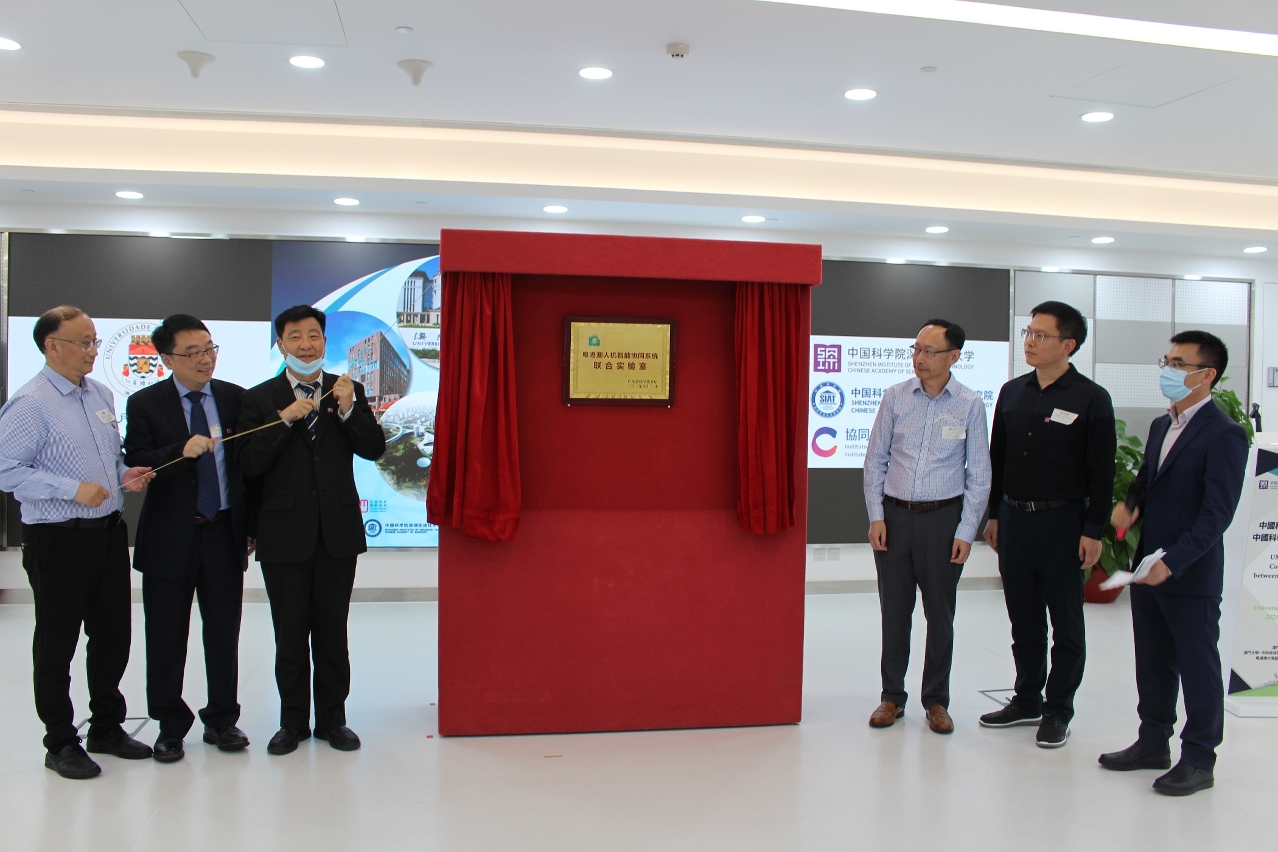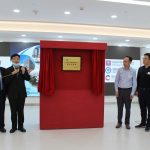 The unveiling ceremony for the Joint Laboratory of Human-Machine Intelligent Collaboration System in the Guangdong-Hong Kong-Macao Greater Bay Area
The unveiling ceremony for the Joint Laboratory of Human-Machine Intelligent Collaboration System in the Guangdong-Hong Kong-Macao Greater Bay Area
The University of Macau (UM) and Shenzhen Institute of Advanced Technology (SIAT) of the Chinese Academy of Sciences (CAS) recently held their first forum, showing that the partnership has reached a new level. During the forum, both parties had in-depth discussions on launching joint training programmes, information technology, life sciences, and other related topics. Both parties expressed hope to combine their strengths to deepen cooperation between Guangdong and Macao, in order to develop the Guangdong-Hong Kong-Macao Greater Bay Area into a leading international centre for technology transfer.
The two-day forum was hosted by UM’s Institute of Collaborative Innovation (ICI) and co-organised by the Faculty of Science and Technology (FST) and the Faculty of Health Sciences (FHS). According to Prof Xu Chengzhong, dean of the FST and interim dean of the ICI, the collaboration between UM and SIAT began in 2019 with the signing of an agreement on the launch of a joint training programme for doctoral students. Both parties have also established a joint laboratory of artificial intelligence and robotics. So far, the joint programme has attracted many doctoral students. In scientific research, UM has collaborated with SIAT in a number of key research projects in recent years (such as the autonomous driving testing platform) to jointly promote innovative collaborative research.
Prof Li Ye, assistant to the dean of the SIAT and director of the Scientific Research Office, recognised UM’s contributions to education and achievements in scientific research. He expressed hope that both parties would combine their advantages, strengthen exchange and collaboration, and explore new areas of collaboration. Witnessed by guests from both parties, Dean Xu and Prof Li unveiled the Joint Laboratory of Human-Machine Intelligent Collaboration System in the Guangdong-Hong Kong-Macao Greater Bay Area, marking a new chapter in the partnership between UM and SIAT. The doctoral students jointly trained by both parties also shared their learning experiences at the forum.
Other guests who attended the forum include Hu Jinxing, senior researcher and director assistant; Ou Yongsheng, researcher of the Institute of Intelligent and Biomimetic Systems; Cai Lintao, researcher and director of the Institute of Medicine and director of the Nanomedical Technology Centre; Li Ming, deputy director of the Education Office; Yang Zhixin, director of UM’s Research Services and Knowledge Transfer Office; Cai Xiaochuan, associate dean for research and graduate studies of the FST; Xu Renhe, associate dean for research of the FHS; Zhou Jiantao, interim head of UM’s Centre for Artificial Intelligence and Robotics; and Ryan U, interim head of UM’s Centre for Data Science.
SIAT was jointly established in Shenzhen by the CAS, Shenzhen government, and the Chinese University of Hong Kong. Integrating scientific research, education, industry, and capital, SIAT strives to enhance independent innovation capabilities of the Guangdong-Hong Kong region and advanced manufacturing and modern service industries in China.
Shenzhen Institutes of Advanced Technology was jointly established by the CAS and the Shenzhen government. It focuses on six key areas, namely synthetic biology, brain science, robotics and artificial intelligence, biomedical engineering, materials science and engineering, and biomedicine.



